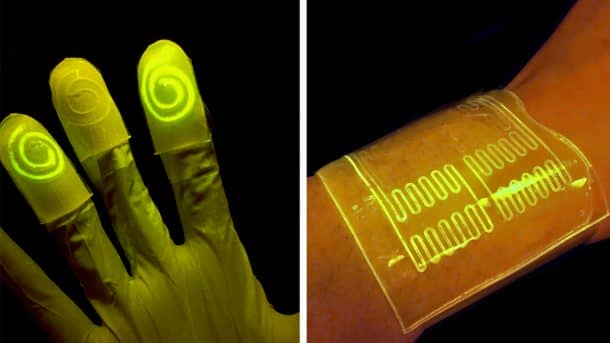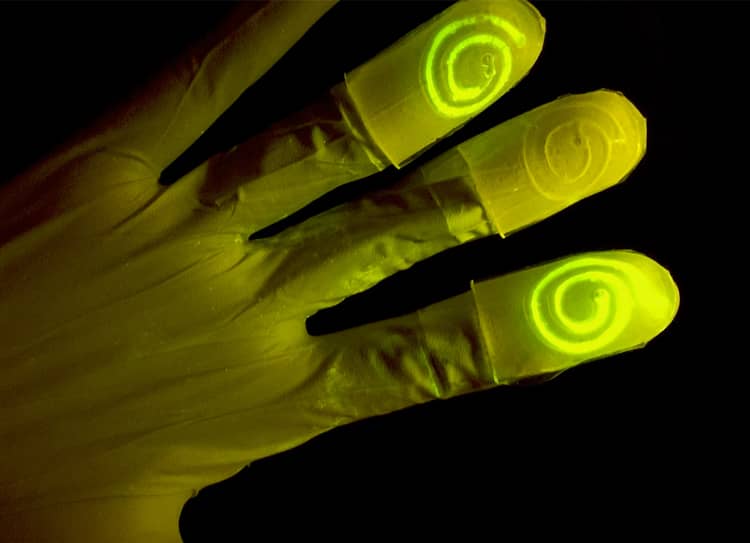We may be walking into an entirely different future of forensics. A team of engineers and biologists at MIT designed a living material that can light up in the presence of certain chemicals. Imagine a future where you don’t have to transfer anything from the crime scene to the lab for forensic tests. All you have to do is touch the spot wearing the living gloves. The tech will remove lots of suspense from a movie scene, but it is super cool.
The research was published in the Proceedings of the National Academy of Sciences. It was co-authored by graduate students Xinyue Liu, Tzu-Chieh Tang, Eleonore Tham, Hyunwoo Yuk, and Shaoting Lin.

The ‘living material’ created at MIT is a biocompatible sheet of hydrogel injected with living cells, genetically modified to glow at the touch of certain chemicals. The strong and stretchy biosensor sheet is made up of 95 percent water bonded with a layer of elastomer – a rubber that is porous to allow an inlet for oxygen. This material is injected with a strain of E-coli bacteria cells that are genetically modified. When these modified bacteria come in contact with some chemicals, a chemical reaction follows that causes the bacteria to glow. E-coli are widely known for causing food poisoning, but in real, most E-coli strains are safe.
The challenge for creating such materials is the maintenance of living cells.
“The challenge to making living materials is how to maintain those living cells, to make them viable and functional in the device. They require humidity, nutrients, and some require oxygen. The second challenge is how to prevent them from escaping from the material,” says Timothy Lu, associate professor of biological engineering and of electrical engineering and computer science.
The end product of the research was a prototype elastomer glove; the fingertips of which contained swirled channels filled with bacteria strains. The cells of each finger tip were modified to detect a different chemical substance. They glowed when a cotton ball soaked with the particular compound was picked up.
Xuanhe Zhao, the Robert N. Noyce Career Development associate professor of mechanical engineering at MIT looks forward to a future where products are made from living materials, such as gloves, or shoes lined with chemical-sensing hydrogel. Patches or bandages could be designed that could detect infection or disease just through a touch. The research was partially supported by Office of Naval Research, the National Science Foundation, and the National Institute of Health.
What are your thoughts on the biomedical product? Comment below!


